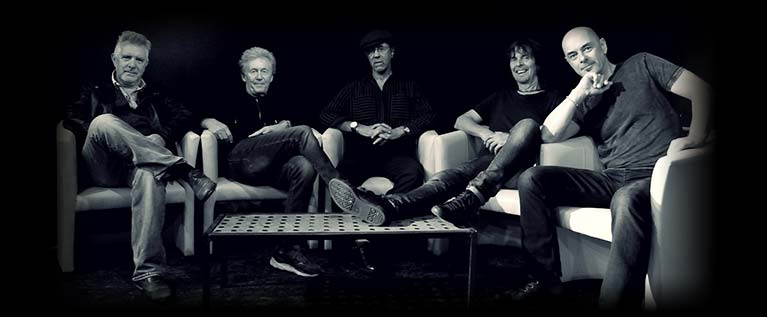Press and promotional queries to Diane Hinds ( info@timbre.co.uk )
Ian Curror (Conductor)
Ian Curror has, since 1974, been Organist of the Royal Hospital Chelsea, home of the famous Chelsea Pensioners. He is only the fourteenth to hold the post since 1693, and the first man to be appointed since 1823 – the post was reserved for women during most of the 19th and 20th centuries. Among his famous predecessors are Charles Wesley and the music historian Charles Burney (father of the diarist and novelist Fanny Burney).
Together with his duties at the Royal Hospital, Ian Curror pursues a busy career as an international recitalist, accompanist and teacher. He has recorded for EMI and Guild Music and is also active as a conductor, examiner and adjudicator. As a professor at the Royal College of Music he does much to promote organ playing, both as a soloist and accompanist, and the development of keyboard and style-related skills. He is a Fellow and Council member of the Royal College of Organists, where he heads the Academic Board, and Chairman of the Church Music Society.
Noel Charles (Organist)
Noel Charles was born in London in 1979. He was educated at the Purcell School of Music and subsequently held organ scholarships at Norwich Cathedral and Oriel College, Oxford, where he was taught by David Sanger and gained a first class degree in Music in 2002. He was awarded the Church Music Scholarship at the Royal Hospital Chelsea for the year 2002-2003, when he also studied piano (with Julian Jacobson) at the Royal College of Music.
The Chapel Choir of the Royal Hospital Chelsea
SOPRANOS ALTOS
Sally Barber, Julia Field
Olivia Maffett, Katharine Smith (Choral Scholar)
Julia Raeburn, Michael Sullivan
Frances Wimpress
TENORS BASSES
George Bartle, Tim Colborn
Peter Kerswell, Justin Harmer
Gerald Place, Guy Protheroe
The Chapel Choir of the Royal Hospital, Chelsea has built an enviable reputation as one of the finest small liturgical choirs in London. Consisting of thirteen singers (five sopranos, two altos, two tenors, three basses and a Choral Scholar), this reputation has been gained through a combination of a wide repertoire of music and through the quality of singing and musicianship, the latter ensured by a stringent audition for entry, at which singers are required to demonstrate a sound vocal technique, flexibility of tone (to assist with good blending), excellent sight-reading skills and a good sense of pitch and rhythm. The choir’s success has also been maintained through its emphasis on friendliness and co-operation – qualities essential for good teamwork.
The choir’s wide and varied repertoire reflects all musical periods and styles. Renaissance polyphony plays an important role and includes motets by a range of European composers. The music of William Byrd and Thomas Tallis is a speciality and is of particular interest as they wrote for both the Roman Catholic and Protestant liturgies. Verse anthems by Maurice Greene and Henry Purcell and works by Handel and J S Bach represent the baroque period. The choir also regularly sings music from the nineteenth century, including Mendelssohn, Brahms, Bruckner, Dvorak and Samuel Sebastian Wesley. The twentieth century is well represented: music by Maurice Duruflé, Francis Poulenc, Igor Stravinsky, Sergei Rachmaninov, Hubert Parry, Charles Stanford, William Harris, Edward Bairstow, William Walton, Herbert Howells, Ralph Vaughan Williams, Jonathan Dove and Sir John Tavener is sung regularly at Chapel services and concerts.
The choir has sung in several broadcasts of the popular BBC Television programme Songs of Praise and BBC Radio’s Choral Evensong . It has recorded for Guild Music.
THE ROYAL HOSPITAL CHELSEA
The Royal Hospital Chelsea was founded by King Charles II in 1682 as a retreat for veterans of the regular army. The re-establishment of a standing army 21 years earlier had made some such measure urgently necessary and the provision of a hostel, rather than some systems of pensions, was undoubtedly inspired by the Hotel des Invalides in Paris which was founded by Louis XIV and about which Charles II had received glowing reports from his son, the Duke of Monmouth.
The building designed by Sir Christopher Wren, the King’s Surveyor-General of Works, was intended to house all army pensioners and originally comprised a single quadrangle, but the strengthening of the forces while the Royal Hospital was still under construction made its enlargement desirable and the task was completed in the reign of William and Mary. The Royal Hospital was first occupied in 1692.
As intended by Charles II, the In-Pensioners have always been organised on military lines, and the military organisation has been preserved with a Governor and Lieutenant Governor assisted by an Adjutant, three Medical Officers, a Chaplain, a Quartermaster and five retired officers, styled Captains of Invalids in command of six companies of In- Pensioners. The scarlet coats and tricorne hats worn by the In-Pensioners are a modernised version of the service dress of Marlborough’s day.
The In-Pensioners number some 350 and are drawn from Army pensioners of good character. They are not normally below 65 years of age and must be free of any family obligation. On entering the Hospital an old soldier surrenders his Army pension in return for which he receives full board, lodging, clothing and medical care. Leave is freely granted and family and regimental associations are encouraged to visit. In-Pensioners have the use of an amenity centre, club, television and billiard rooms, a library, handicraft centre, a bowling green and allotment gardens.
The average age of the In-Pensioners is 81; they have a total of about 8,000 years service between them and have served in every campaign and theatre in which the British Army has been involved between 1927 and 1980. The last survivor of the First World War died in 2002.
INTRODUCTORY NOTES
It was in 1830 just one year after the Catholic Emancipation Act that the church of St. George in Worcester was dedicated. From its opening the church cultivated a tradition of performing elaborate choral and instrumental music at High Mass, frequently with the participation of itinerant professional singers. In 1843 William Henry Elgar, the composer’s father was appointed Organist. In his Notes on Catholic Worcester , the printer and later choirmaster of St. George’s, Hubert Leicester wrote as follows: ‘Prior to W. H. Elgar’s appointment [the composer’s father] the choir had already gained a distinguished reputation…..The character of the music and its rendering attracted many singers both Catholic and Protestant to join the choir, a choir which is justly claimed to be one of the most distinguished and talented in the West of England. ‘ It was to this seemingly secure tradition that the Protestant William Henry Elgar succeeded in 1843, and remained in the post until 1883. However, his regular habit of retiring to ‘The Hop Market’ hostelry for liquid refreshment during the sermon can scarcely have helped the spirit of ecumenism in the City of Worcester, any more than the jestful threatening of his daughters with a shotgun if he caught them going to confession! ‘
On 14th July 1872, at the age of fifteen, his son first played the organ at Mass and began an association with the music of St. George’s which continued until he left Worcester for London shortly before his marriage in 1888. It is from this formative period of Edward Elgar’s emergence as a composer that much of the music in this recording stems. Nevertheless it is important to consider it as one of several opportunities, though by no means the most significant, that gave him scope for experimentation and creative development. By the time of Elgar’s official appointment as Organist in January 1886, it seems that the glory had departed from the choral tradition of the church, as his exasperated comments to his Yorkshire friend Dr. Charles Buck suggest: ‘I am a fully fledged organist now & hate it. I expect another three months will end it; the choir is awful & no good to be done with them.’ He shared the administration of the music with Hubert Leicester, who served as Choirmaster. Together they published a set of regulations in an attempt to consolidate what had clearly become an unsatisfactory state of affairs:
‘In order to put the Choir on a satisfactory footing, and to ensure regular and punctual attendance at the Services and Rehearsals, we find it necessary to require you to sign the enclosed Conditions of Membership and return the same to the Choirmaster, before the end of the present month, if you wish to remain a Member.
EDWARD ELGAR, ORGANIST.
HUBERT LEICESTER, CHOIRMASTER.
To this was appended a further significant requirement: ‘The members to conform in all musical matters to the instruction of the Organist, whose authority all questions of Music shall be supreme.’
As well as fulfilling the duties of Choirmaster, Hubert Leicester had produced for the church in 1878 a collection of hymns by courtesy of his family’s printing business. Nos. 4, 6, 8 & 9 are from this collection and are here recorded for the first time from the manuscripts purchased at auction by Manfred Mann. The texts of the hymns are printed but the individual voice parts are in manuscript, mainly in the initialled and dated hand of Hubert Leicester and in a few cases wholly or partly in Elgar’s hand.
The first organ at St. George’s was built by John Baldwyn of Worcester in time for the opening of the church. It was rebuilt and enlarged on the advice of W.H. Elgar by John Nicholson who had moved from Rochdale to Worcester in 1841. There has been some confusion over the specification of the organ that Elgar and his father played. This has not been helped by the fact that in 1889 it was disastrously restyled by Anneessens & Fils of Grammont, Belgium, to the extent that Nicholson’s had to be employed yet again to rebuild the organ in 1901. Some writers have erroneously taken this instrument to have been ‘The Elgar Organ.’ Recent research by the present writer ( q.v. The Journal of the British Institute of Organ Studies Vol.18) has ascertained that only a few of the pipes from the 1841 organ still exist in the present instrument (which was rebuilt yet again in 1970). The stop list of the organ during the Elgars’ association with St.George’s was probably as follows:
Great Organ (GG-e3) Swell Organ (c-e3) Pedal (C-c1)
Open Diapason 8 Double Diapason 16 Open Diapason 16
Stop Diapason 8 Open Diapason 8 Bourdon 16
Gamba (c) 8 Principal 4
Principal 4 Fifteenth 2
Fifteenth 2 Oboe 8
Sesquialtera [III] Cornopean 8


